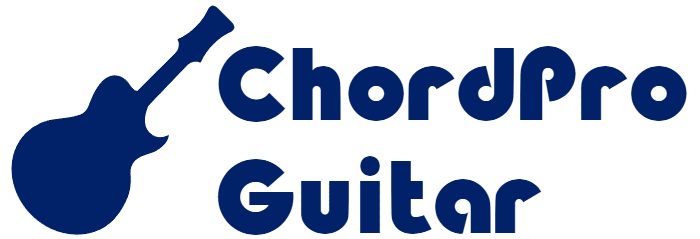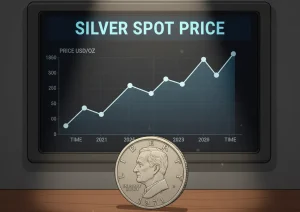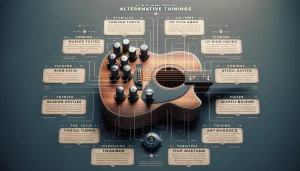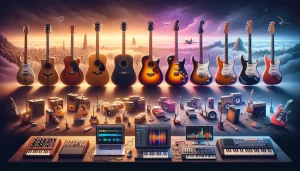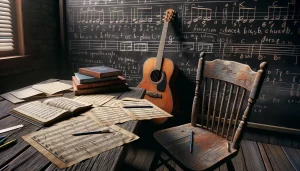Understanding the Basics of Guitar Tabs
What Makes Guitar Tabs So Unique?
Imagine this: you’re holding your guitar, eager to play your favorite song. But instead of reading traditional sheet music—full of mysterious symbols and lines—you have something far simpler: a guitar tab! It’s like a map, leading you straight to the chords and riffs without needing years of music theory.
Guitar tabs are designed specifically for guitarists, showing you exactly where to place your fingers on the fretboard. Think of it as a treasure map, with every number pointing to a specific spot on your guitar’s neck. No complicated clefs or sharps to decode—just pure, unfiltered guidance.
But wait, there’s more! Tabs also come with little extras that bring a song alive: symbols for slides, bends, hammer-ons, and more. It’s not just reading—it’s unlocking the personality of the music.
Why Every Beginner Should Learn Tabs
Tabs are a beginner’s best friend because they speak your language—no need to read “standard notation.” Here’s why they’re so beginner-friendly:
- They’re visual: Numbers tell you where to press, and the lines represent strings. Easy, right?
- They let you dive right in: Skip the theory, start playing riffs today.
- Tabs = creativity: You can experiment, tinker, and develop your unique sound faster.
Think of a tab as the cheat code to your musical journey.
Reading the Strings and Frets on a Tab
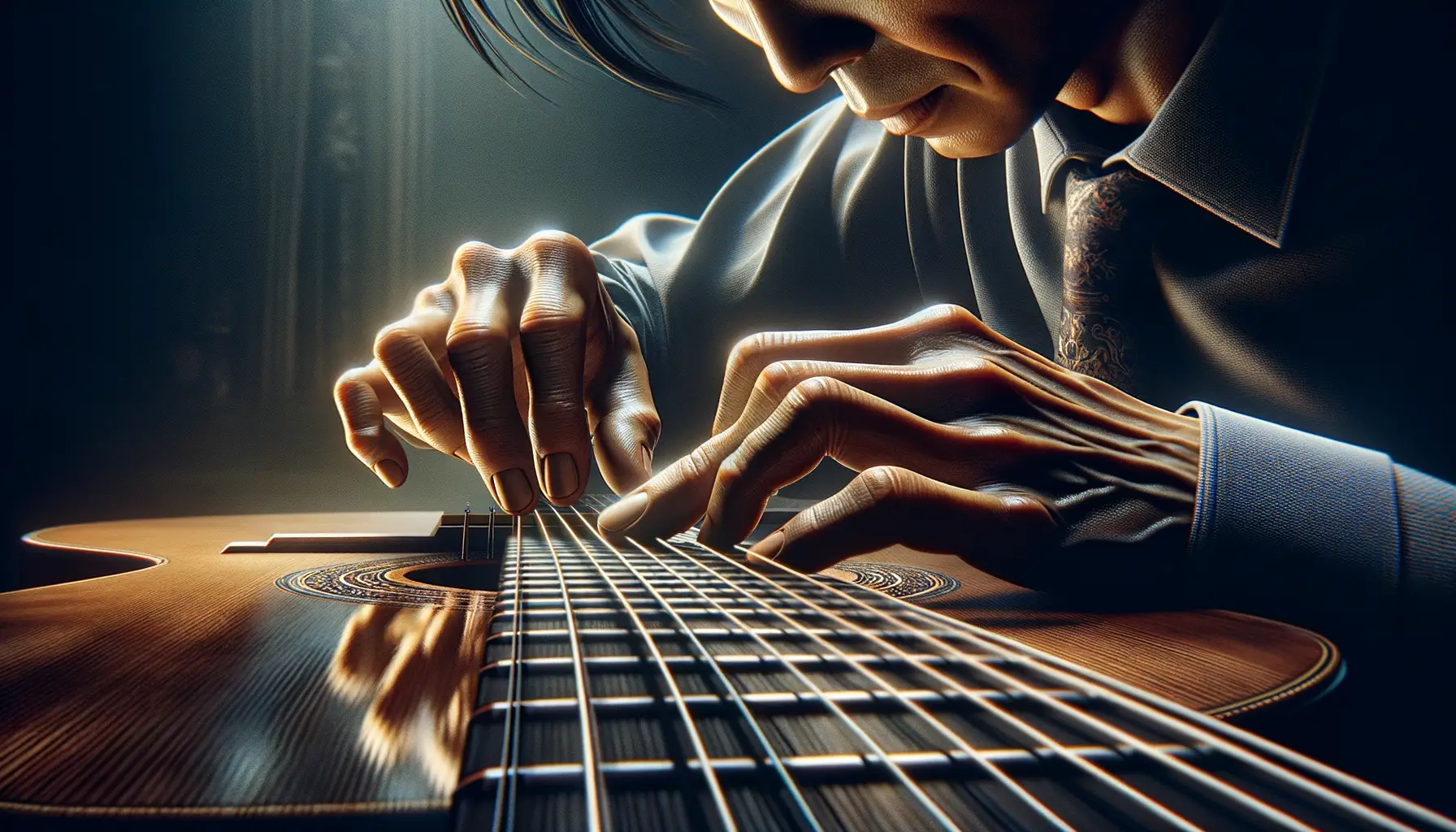
Strings: Your Musical Highway
Picture the guitar as a road map, and each string is a lane taking you to a different destination. Guitar tabs use numbers and lines to show you exactly where to go. The six horizontal lines you see? Those represent your guitar’s strings—the bottom line stands for the thickest string (low E), and the top one is the thinnest (high E).
Here’s the trick: the numbers on the lines reveal which fret to press. For example, if you see a “3” on the second line from the bottom, it means pressing down on the 3rd fret of the A string (second thickest string). No need to overthink it—just imagine you’re stepping stones across a stream.
- If there’s a “0,” play the string open—no fingers needed!
- Higher numbers mean climbing up the fretboard toward the body of your guitar.
Fretting Like a Pro
Your frets are like keys to a secret code. Let’s break it down: the space between those vertical metal bars on the neck is where you’ll place your fingers. Tabs give you the exact blueprint so you won’t get lost.
Need an example? If the tab shows “5” on the high E string, apply gentle pressure on the 5th fret of that string, and let it ring like a bell. Too much force might choke the sound, too little might be a whisper. The sweet spot? That’s where the magic lives.
Common Symbols and Notations in Guitar Tabs
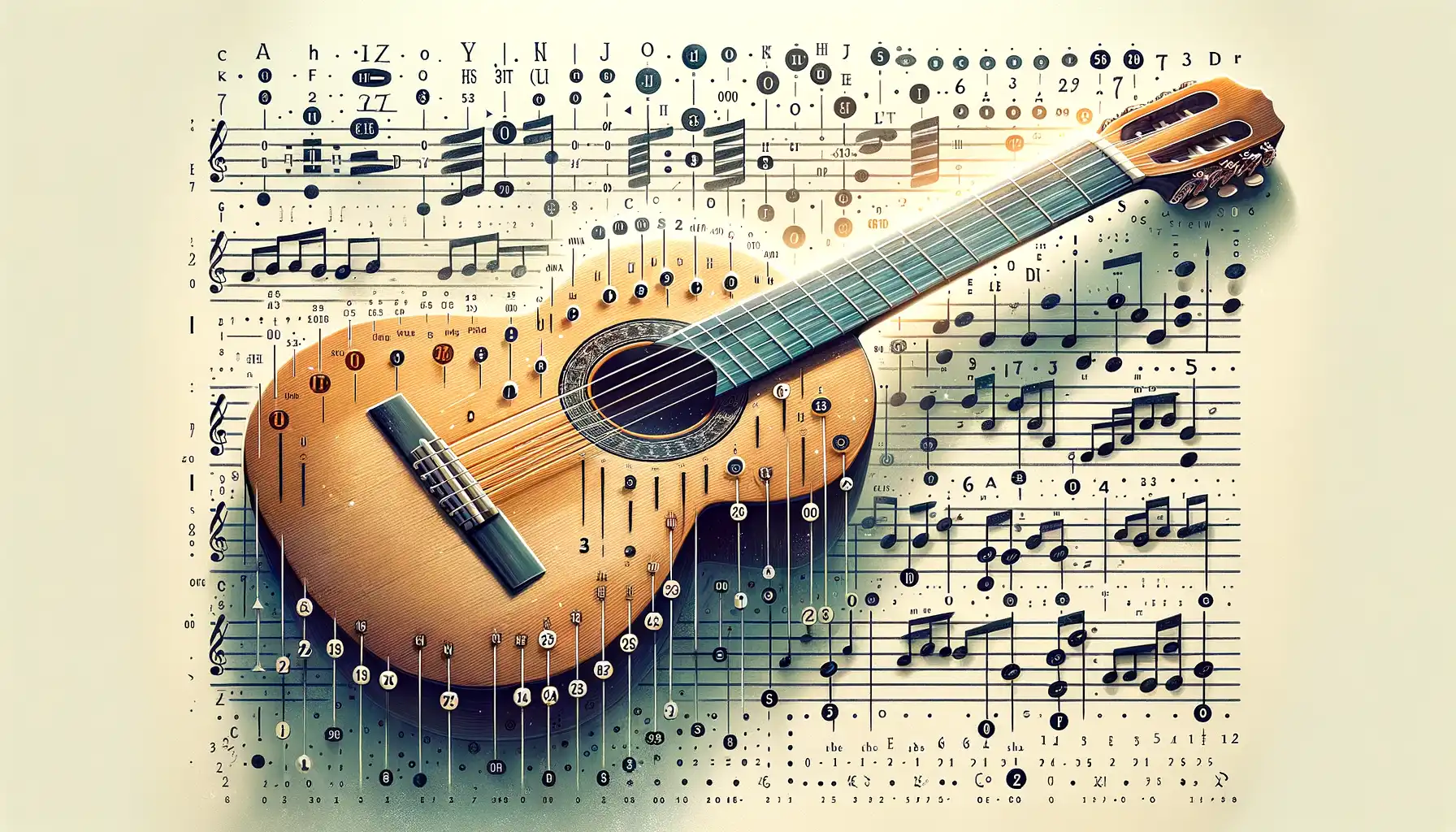
Decoding Guitar Tab Symbols
Reading guitar tabs is like learning a secret code that opens up an entire world of sound. But some symbols might feel like hieroglyphics at first glance, right? Don’t worry—with just a little practice, you’ll crack them faster than you think! Here’s your cheat sheet for the most common ones:
- H for hammer-on: Think of it as gently pressing one note onto another without strumming again. It’s smooth and flowing, like skipping stones across water.
- P for pull-off: The reverse of a hammer-on. You’re “pulling” your finger away to let the lower note ring out.
- / for slide up or \ for slide down: These symbols are all about gliding. Imagine moving effortlessly between two notes—it’s what gives solos their emotional intensity.
- ~ for vibrato: Shake your fretting hand slightly to make the note wobble. It’s like letting the music breathe.
Little Details That Matter
Sometimes, you’ll spot symbols like b for bend or t for tapping. These techniques add flair to your playing. A “bend” is where you push the string to change pitch—almost like tugging at the note’s heartstrings. Tapping, on the other hand, feels electrifying, like rapidly drumming on the fretboard with both hands.
Every symbol is a hint at how to make your guitar sing—and once you start hearing these elements in songs, you’ll never listen the same way again!
Practice Tips for Mastering Guitar Tabs
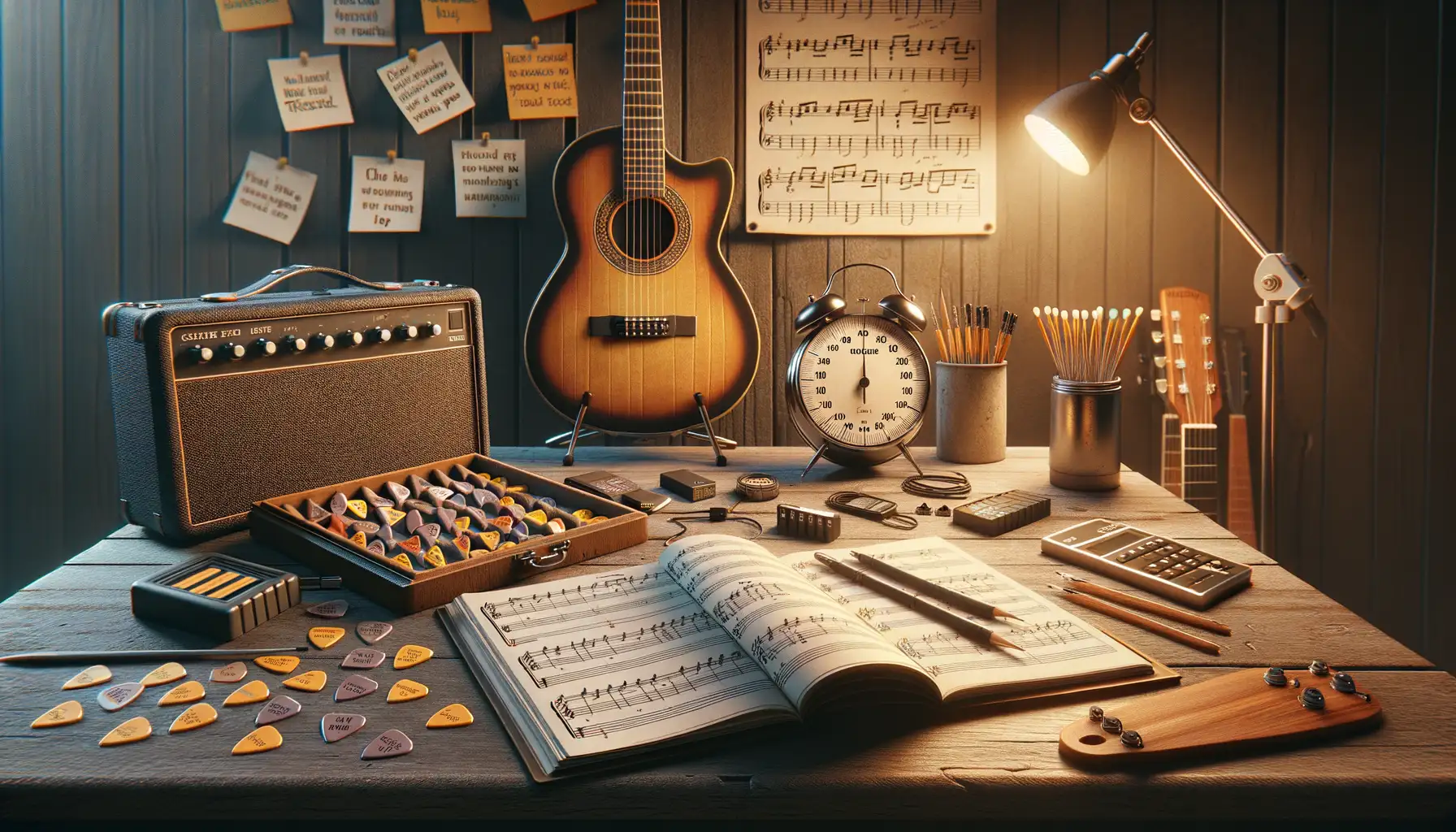
Break It Down, One Tab at a Time
Mastering guitar tabs is like learning to speak a new language—start with the alphabet before trying Shakespeare! Tackle songs and riffs in small chunks. Instead of aiming to shred through an entire tab, focus on a couple of measures or even just one tricky part. Repetition is your secret weapon here. Play it slow, let your fingers memorize every movement, then gradually speed up. Think of it as building muscle memory, one fret at a time.
Pro Tips for Killer Practice Sessions
Ready to level up? Let’s make your practice count with these clever tips:
- Count out loud: Feeling lost in rhythm? Count along to the beat—1, 2, 3, 4—and match your strumming or picking to the tempo.
- Use a metronome: Yes, it’s a love-hate relationship, but a metronome keeps you honest and steady. Start slow and increase the speed bit by bit.
- Record yourself: Your phone is your friend! Playback reveals details you might have missed while playing live.
And don’t forget to embrace mistakes. They’re not the enemy—they’re proof you’re stretching your skills. Stay patient, stay playful, and soon those tabs will feel like second nature.
Frequently Asked Questions About Guitar Tabs
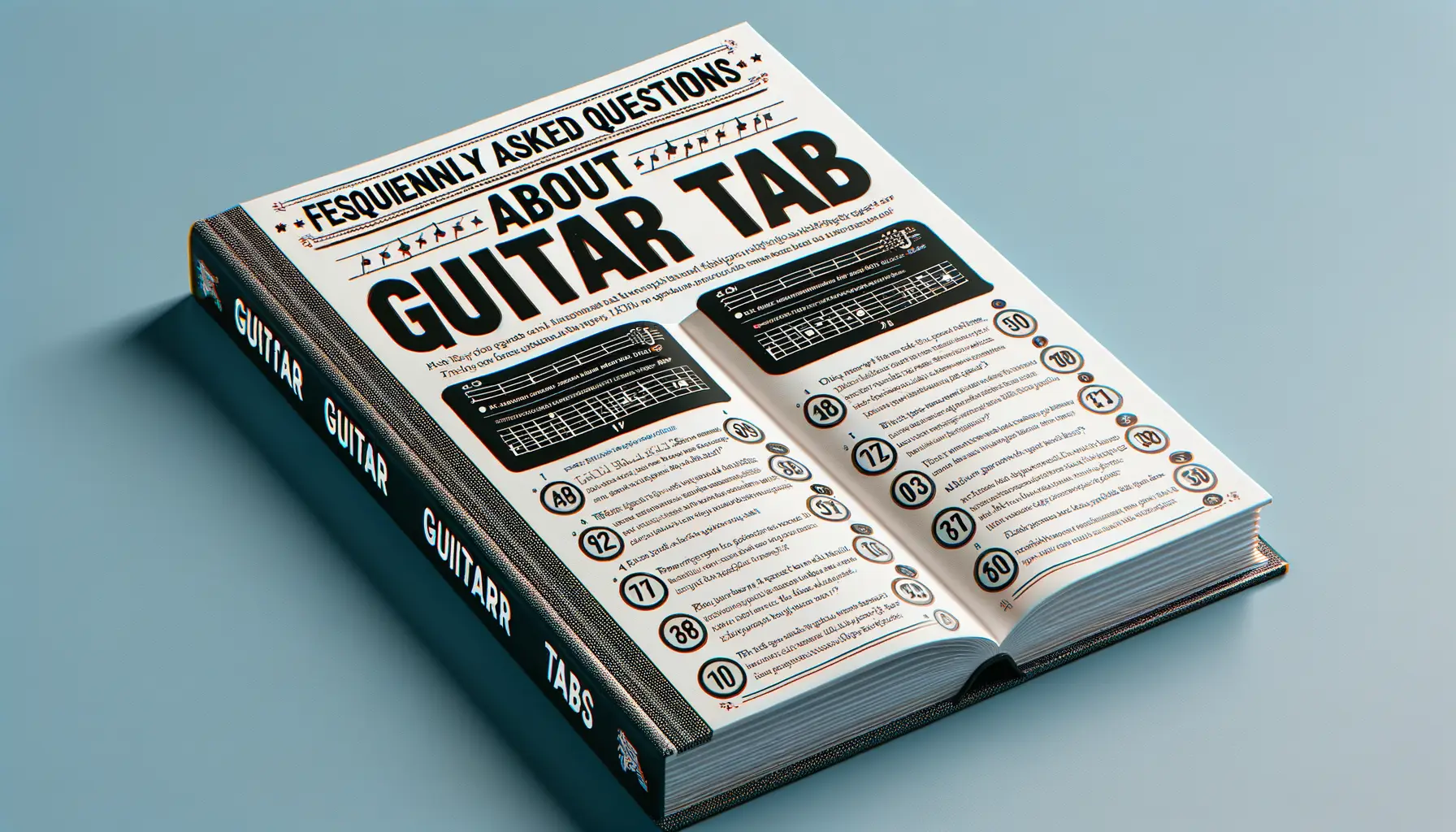
What Are Guitar Tabs, Really?
Think of guitar tabs as the treasure maps of the music world. They guide you to unlock melodies without needing to decipher traditional sheet music. But instead of an “X” marking the spot, you’ll find numbers, lines, and quirky symbols leading the way. If you’re wondering how these mysterious little tabs actually work, don’t worry—you’re not alone!
Tabs are simply a snapshot of where your fingers need to go on the fretboard. Perfect for beginners, they skip the complicated rhythms of standard notation and get straight to the point: playing your favorite songs. Still scratching your head? Imagine this: each line represents a string, and those numbers? Your roadmap to rocking out!
Got Questions About Specific Tab Symbols?
Let’s decode! Those extra squiggles and arrows can leave even the most eager learner stumped. Here’s a quick cheat sheet:
- “/”: Slide up—like gliding into a high note.
- “p”: Pull-off—think of it as a quick escape from one fret to another.
- “~”: Vibrato—add some flair and drama!
Learning these is like picking up slang in a new language. It may feel clunky at first, but soon enough, you’ll be head-nodding in fluent tab-speak!
